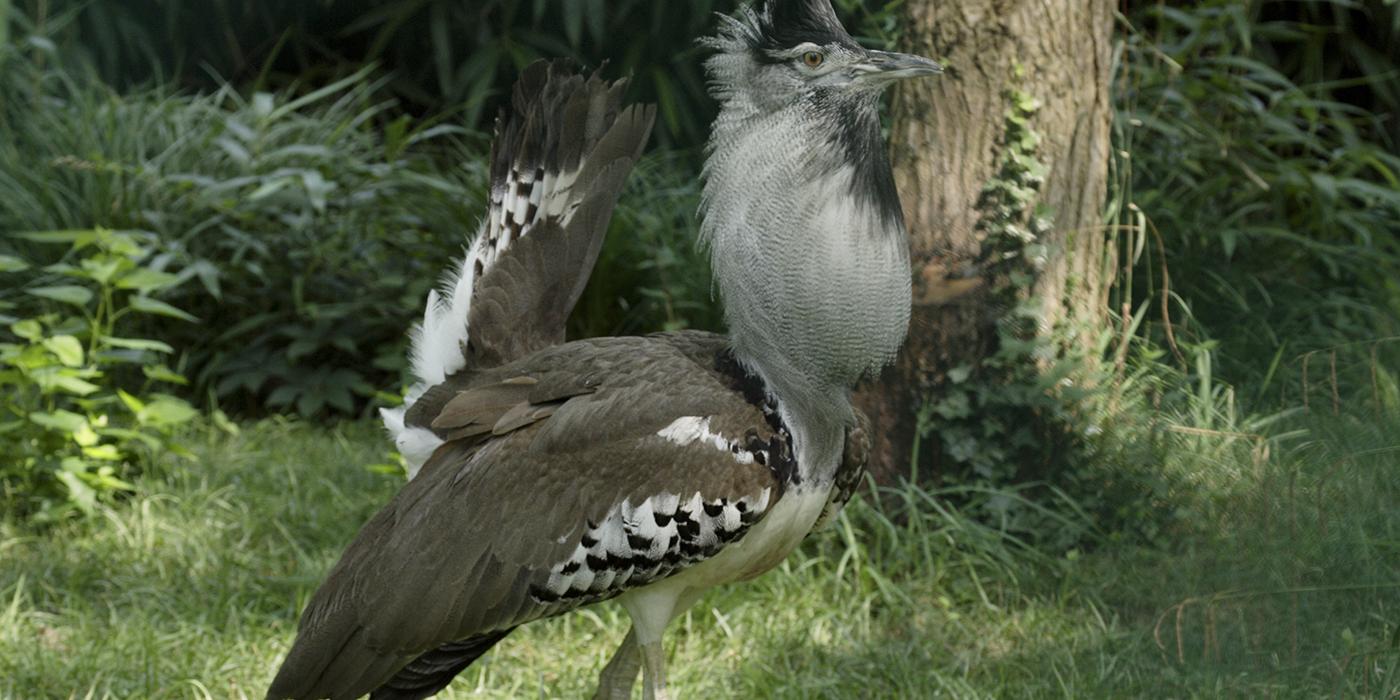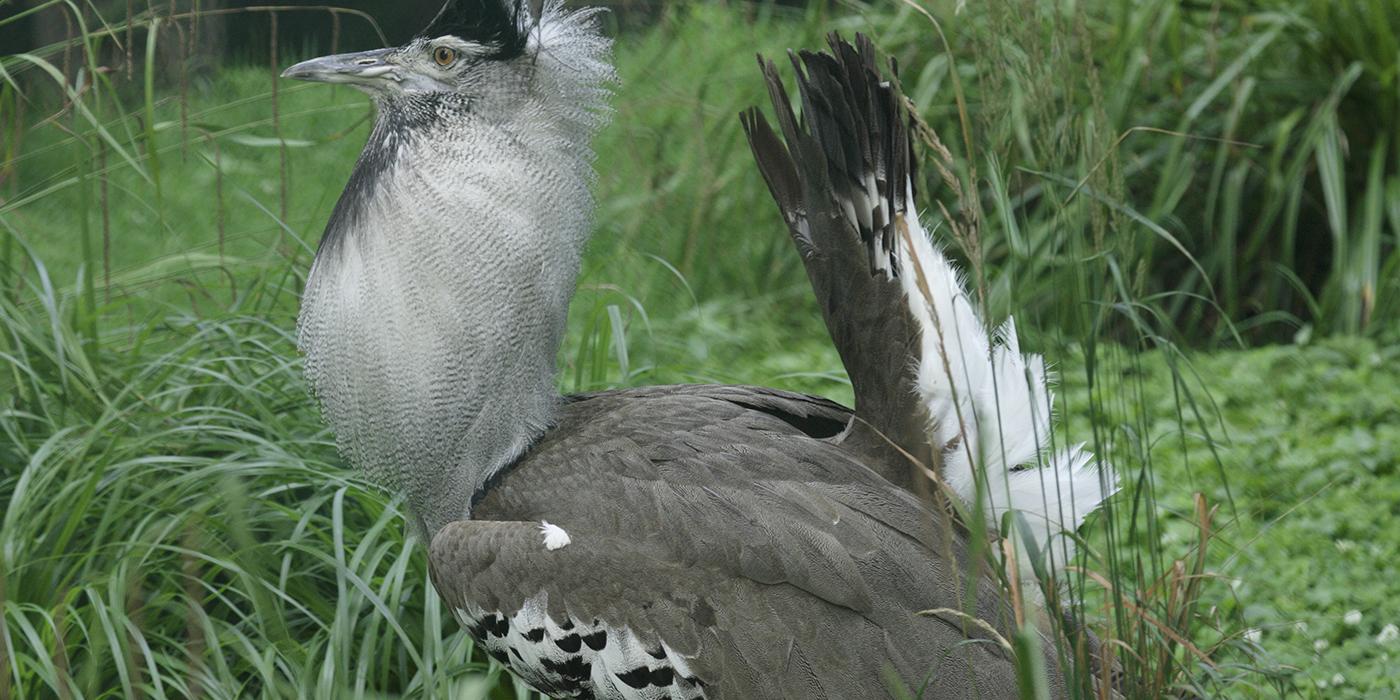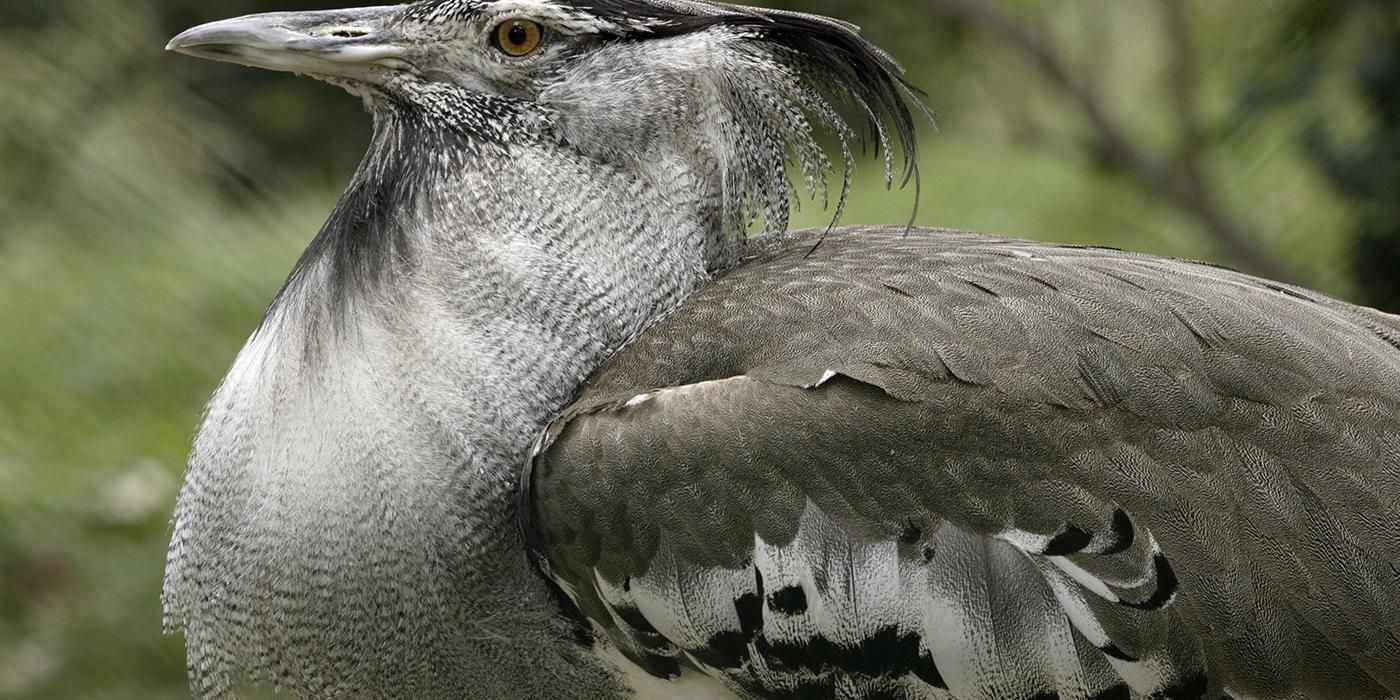Physical Description
Their upper plumage is buff and gray, finely barred with black, which allows them to blend in with their environment. The underparts may be pale buff, white or solid black. They have only three front toes, which are short, broad and well adapted for running. Males are more brightly colored than females.
Size
Male kori bustards range in weight from 24-42 pounds (11-19 kilograms), and females are roughly half the size of the males. They stand about 5 feet (1.5 meters) tall.
Native Habitat
Kori bustards are distributed throughout eastern and southern Africa. They inhabit wide, open grasslands and lightly wooded savanna.
Communication
During the height of the mating display, the male inflates his esophagus to as much as four times its normal size. The tail feathers are cocked to reveal as much of the white underfeathers as possible. The wings may droop down so much that the tips of the primaries touch the ground. During direct courtship of a female, the male will bow toward her with his neck inflated and bill snapping. He may also emit a low-pitched booming sound.
Food/Eating Habits
Kori bustards are omnivorous birds, although they tend to be more carnivorous than other species of bustards. Insects form a large portion of their diet, especially when they are chicks. They also eat a variety of small mammals, lizards, snakes, seeds and berries. They have been observed eating carrion.
Social Structure
Males often gather in loose, lek-like formations on top of low hilltops and display for females.
Reproduction and Development
A male kori bustard will mate with more than one female. Mating lasts no more than a few seconds and, once over, the male leaves and resumes displaying to attract another female. He plays no part in incubation or in the rearing of chicks. As with all bustards, the clutch of one to two eggs is laid on the ground in a shallow scrape the female has made.
The eggs are pale olive in color with splotches of brown. Incubation lasts 23 to 24 days. The chicks hatch fully developed and remain with the female well after the fledging period, which is at about five weeks. Kori bustards reach sexual maturity at about 2 years old, at the earliest.
Conservation Efforts
The Smithsonian's National Zoo’s research with kori bustards has focused on behavior and reproduction with the goal of advancing the understanding of kori bustard biology and making recommendations to improve its survival, both in the wild and in human care. Since 1970, kori bustard ranges have shrunk more than 20 percent in East Africa, and close to 10 percent in southern Africa.
The distribution of this kori subspecies is becoming fragmented and is declining in numbers due to a slow reproduction rate, hunting, and habitat destruction from agriculture and development. Local extinctions have been recorded.
Zoo scientists studied the behavior and reproduction of adults, sub-adults and chicks; specifically, they examined breeding displays, hormone patterns and copulation. Zoo scientists sought to understand kori bustard actions and responses during certain times of the day and seasons, and how their activities vary between the sexes. They also studied how the birds interact with and react to Zoo visitors. The Zoo successfully bred this species for the first time in October 1997, and was only the third zoo in the United States to breed this species.
Help this Species
- Share the story of this animal with others. Simply raising awareness about this species can contribute to its overall protection.
- Are you a student? Did you love what you learned about this animal? Make it the topic of your next school project, or start a conservation club at your school. You'll learn even more and share the importance of saving species with classmates and teachers, too.
Animal News

Leaf-tailed Gecko Treated for Skin Cancer With Chemotherapy





